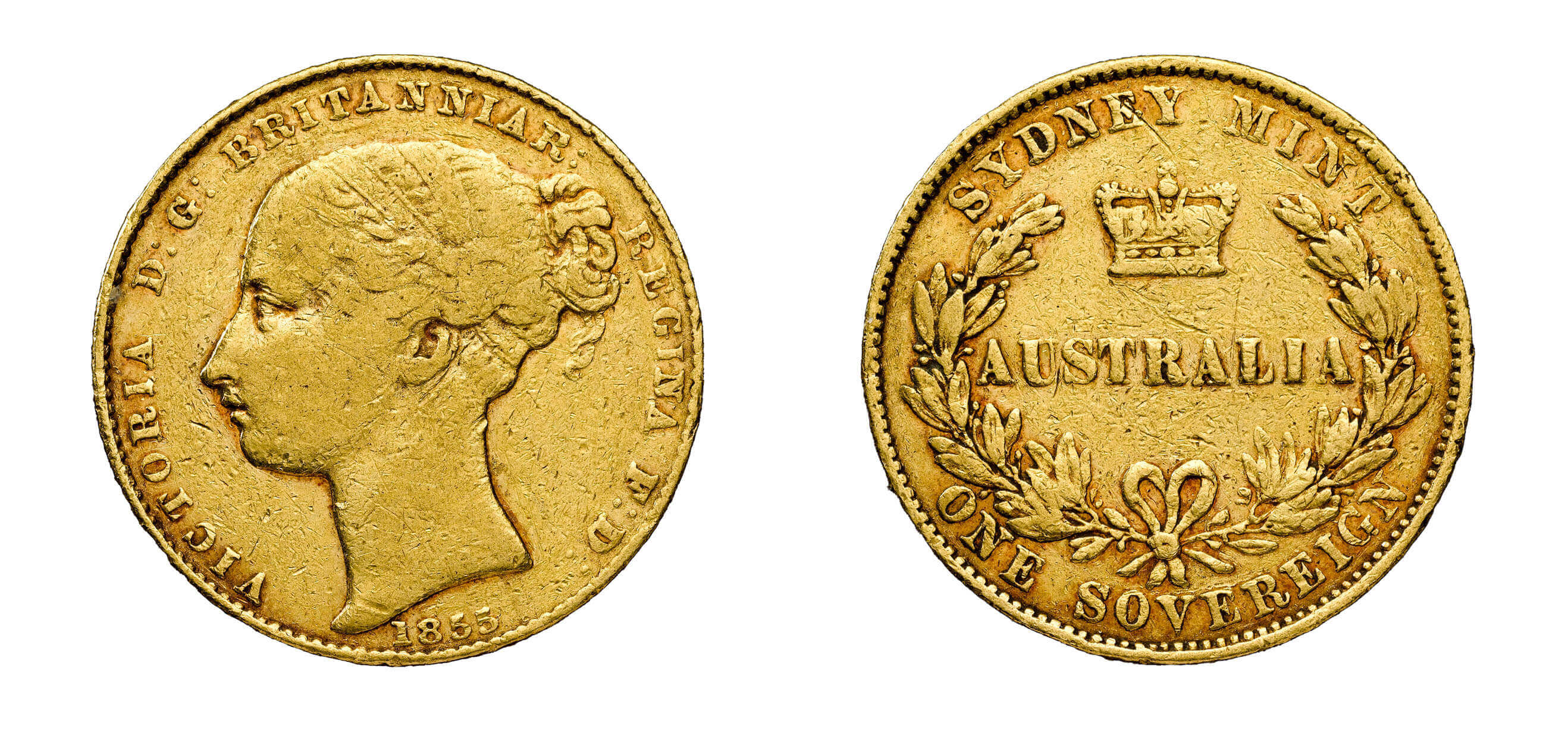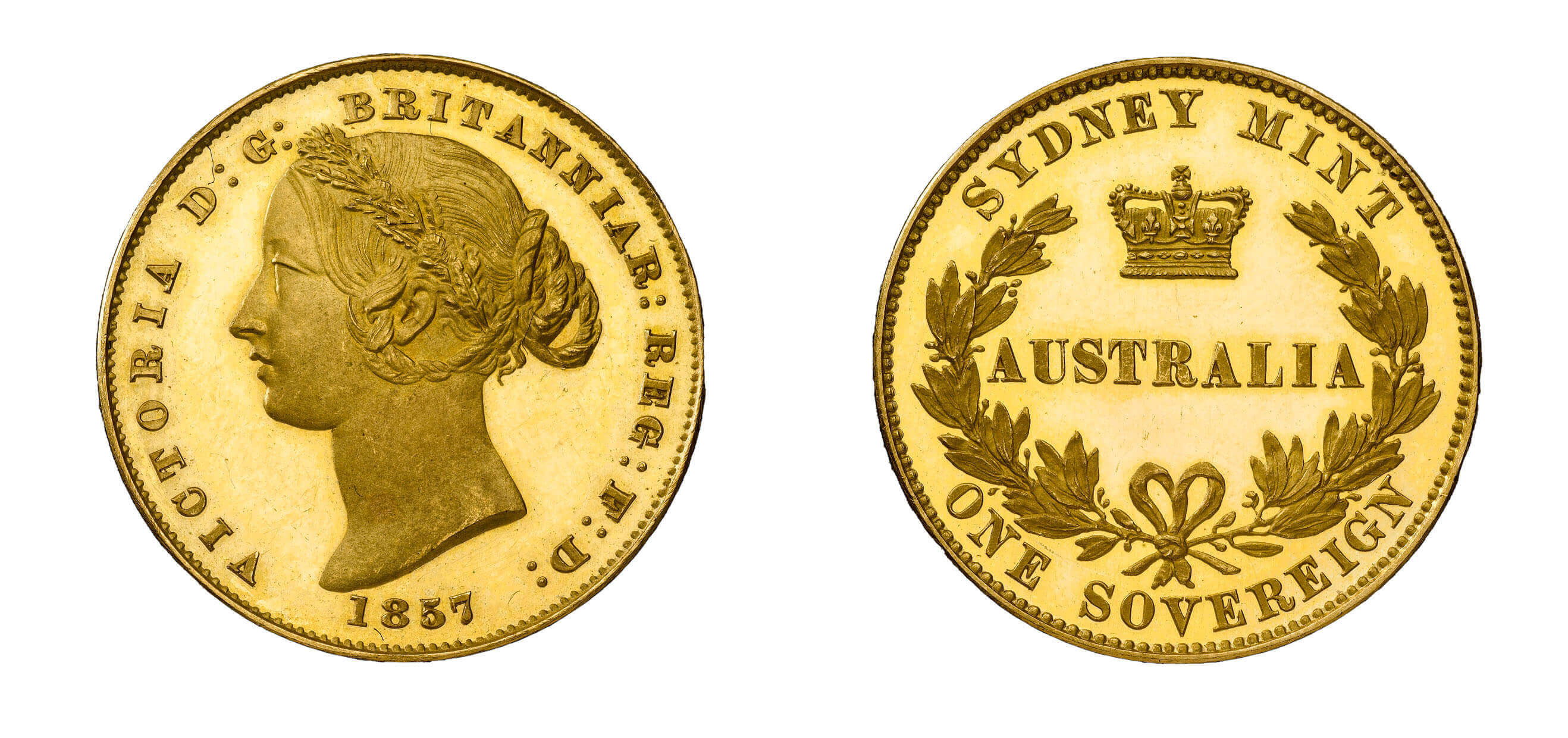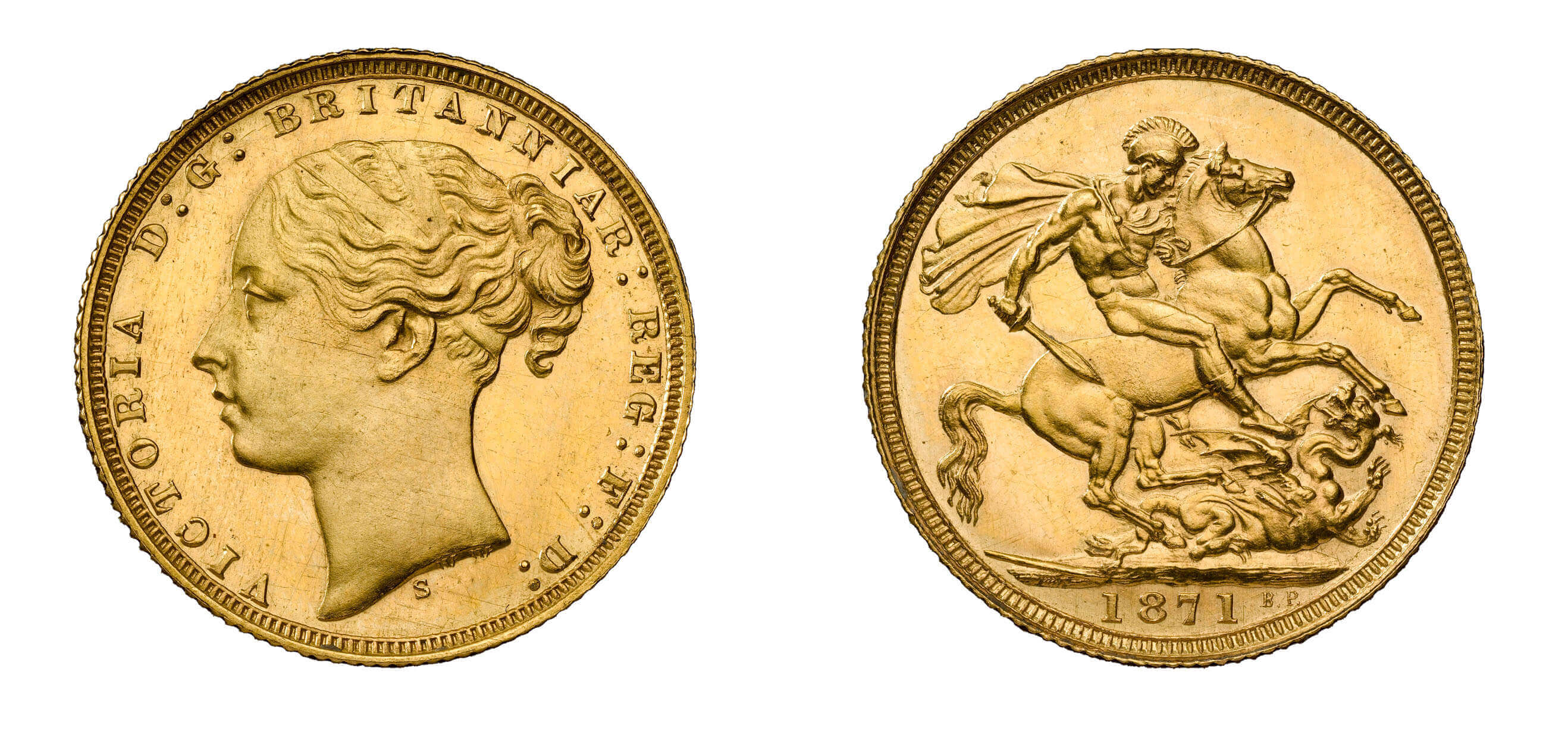Overseas Production
The first branch of the Royal Mint opened in 1855. Administered from London, the new branch in Sydney converted locally mined gold into sovereigns although there were initial concerns that the branch would not be able to produce coins of a sufficiently high quality. As a result, these early branch mint pieces held a different design to those struck in London and were not legal tender in the UK. The coins struck in Australia bore a portrait of Queen Victoria by James Wyon, William Wyon’s cousin, and, on the reverse, the inscriptions ‘SYDNEY MINT ONE SOVEREIGN’ and ‘AUSTRALIA’ within a crowned wreath.

Victoria sovereign 1855, Sydney branch (RMM3806)
Owing to criticism of James Wyon’s design, in 1857 a version prepared by Leonard Charles Wyon, William Wyon’s son, replaced the portrait. This new design showed Queen Victoria crowned in a wreath of native banksia leaves and remained on Australian-produced sovereigns until 1870.

Victoria sovereign 1857, Sydney branch (RMM2809)
A Uniform Design
As concerns over the quality proved groundless, these sovereigns became legal tender in the UK. From 1871, when the St George design was brought back on to the coinage, Australia obtained the right to produce designs identical to those struck in London, save for the inclusion of a small letter ‘S’, a mint mark, to denote that the coins were struck in Sydney. In addition to the St George design, the Australian branches also retained the use of the heraldic shield and employed both designs until 1887, at which point the branch mint sovereigns and those struck in London both featured Pistrucci’s St George and the dragon design. With demand for sovereigns growing worldwide, a Melbourne branch mint opened in 1872 and a branch mint in Perth began production of the coin in 1899 at the end of Queen Victoria’s reign.

Victoria sovereign (RMM3774) featuring Sydney Mint 'S' mintmark on obverse
